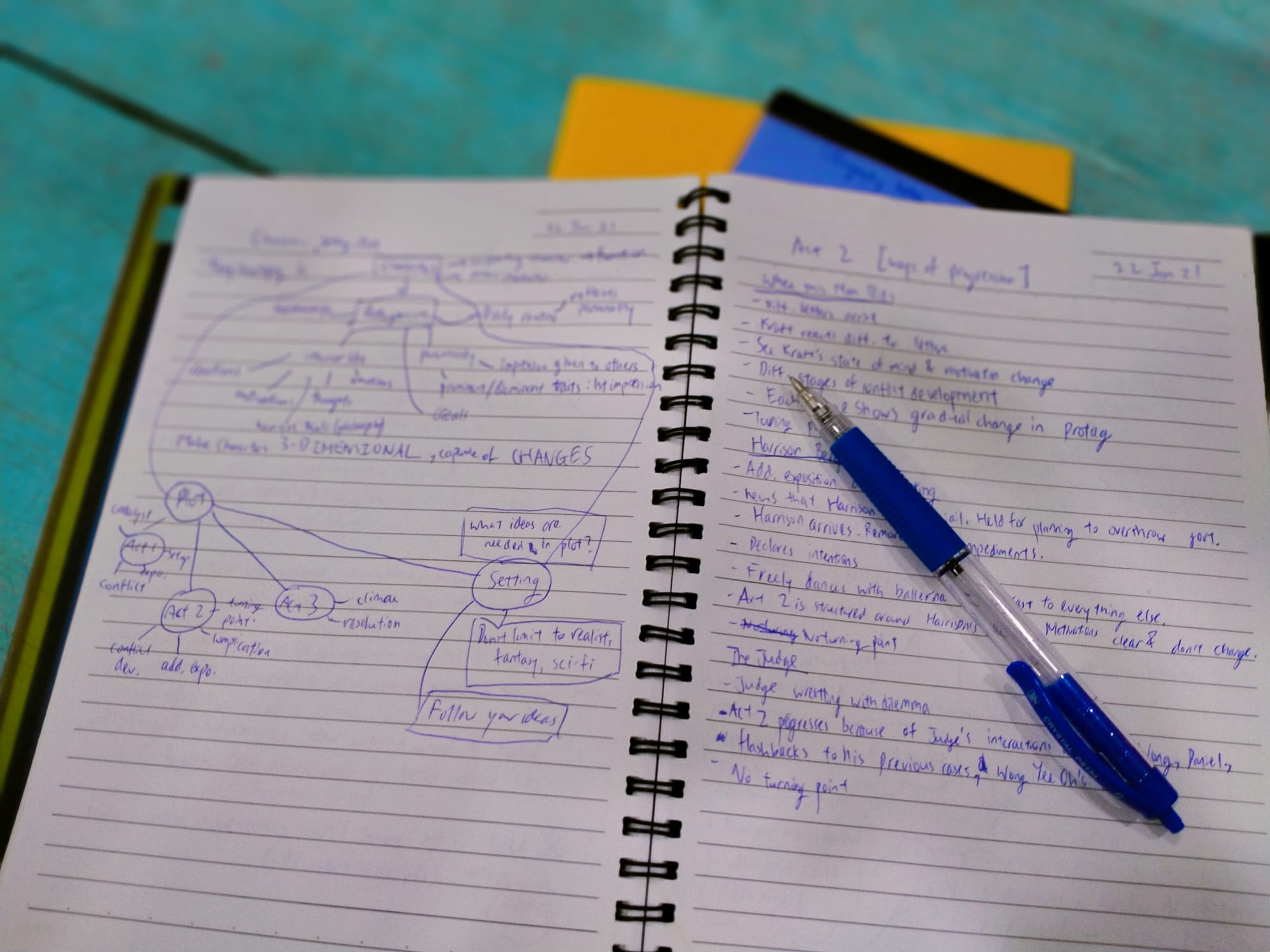But then, “make it so” is such a vague instruction. In the Literary Arts programme, we learn ways to carry out this command and develop our storytelling abilities. For short stories, we were taught about the
3-Act Structure. In short, the 3-Act Structure refers to dividing a story into three Acts, or sections, with each section containing important elements pertaining to the story. My favourite tip for writing short stories using the 3-Act Structure would be to start as late in the story as you can. What this does is the reader is denied information about the story, such as the setting and background, keeping them on their toes and wanting to find out more.
We were also taught about
character development in a story. A satisfying ending is normally one where the character whom readers have grown attached to has evolved in some way. In this case, the famous phrase pronounced by many primary school English teachers has earned its keep: ‘Show, don’t tell.’ Readers want to see how the character has developed, not be told about it. This can be achieved by detailing small everyday actions that the character does, though maybe he or she does it in a different manner by the end of the story.

Some of my personal notes on the 3-Act Structure and character roles